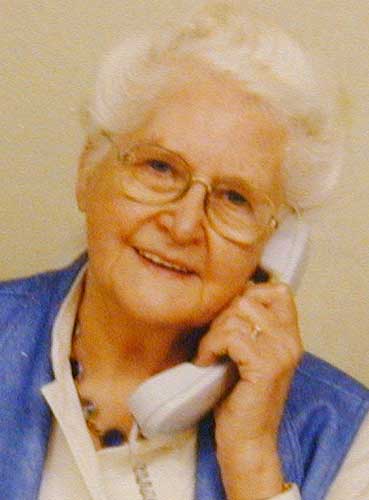Nancy Tait: Campaigner dedicated to fighting for the rights of asbestos victims

Your support helps us to tell the story
From reproductive rights to climate change to Big Tech, The Independent is on the ground when the story is developing. Whether it's investigating the financials of Elon Musk's pro-Trump PAC or producing our latest documentary, 'The A Word', which shines a light on the American women fighting for reproductive rights, we know how important it is to parse out the facts from the messaging.
At such a critical moment in US history, we need reporters on the ground. Your donation allows us to keep sending journalists to speak to both sides of the story.
The Independent is trusted by Americans across the entire political spectrum. And unlike many other quality news outlets, we choose not to lock Americans out of our reporting and analysis with paywalls. We believe quality journalism should be available to everyone, paid for by those who can afford it.
Your support makes all the difference.Nancy Tait was the foremost campaigner of her generation for the rights of the victims of occupational illnesses, particularly those related to asbestos. She grew up in an era when the mineral was regarded as a lifesaver, but she lived to see it become a "killer dust". Her life was dedicated to ensuring that everyone recognised that lethal potential and that victims of asbestos received adequate compensation.
Tait was unlikely material for a workers' rights campaigner. She was born in Enfield, north London, the daughter of William and Annie Clark. Her father was a compositor. She was educated at Enfield County School for Girls and then joined the Civil Service. Her career was interrupted by the Second World War, but she found herself working alongside her future husband, Bill Tait, who was a telephone engineer for the General Post Office (GPO). They married in 1943 and by the end of the war had a son, John.
Tait settled into conventional married life, the family income supplemented by her various clerical jobs. In 1967, however, Bill became seriously ill. He died the following year, at the age of 61. The cause was pleural mesothelioma, a virulent lung cancer associated with asbestos. Watching her husband become distressed and then destroyed by the disease proved life-changing for Tait, who engaged in a protracted battle over the occupational nature of the illness.
Bill had not worked in the asbestos industry, but he had inhaled fibres from asbestos products in his "downstream" occupation. In trying to establish that such exposure was enough to cause mesothelioma, Tait encountered official obstructionism that she later described as "completely unscrupulous and ruthless". Moreover, she had lost employment and pension rights, thus involving her in another battle for compensation. She was offered £4,000 ex gratia by the GPO (which she refused) and a £154-a-year pension. A government minister told her that she would not necessarily get both.
These injustices prompted Tait's second career. With the help of influential friends (such as Lord Plant of Benenden and Lord Avebury), she organised an informal action group. In 1976, she was awarded a Churchill Travelling Fellowship that allowed her to study the asbestos hazard abroad. In the same year she published Asbestos Kills, a booklet that emphasised the dangers of all types of asbestos (including white) and presciently flagged the hazards of environmental and downstream exposure.
These warnings were not welcomed by the asbestos industry or the government. The leading asbestos company, Turner & Newall, described her as a "self-appointed meddler", while scientists and the government dismissed her work as alarmist. However, when the asbestos industry launched an advertising campaign Tait (outraged at the sight of one poster that claimed "Asbestos Protects") stepped up a gear. In 1978, she founded the Society for the Prevention of Asbestosis and Industrial Diseases (SPAID), later renamed the Occupational and Environmental Diseases Association (OEDA).
The asbestos industry reached an accommodation with many of its potential critics, but not with Tait. She could be obstinate and uncompromising, even with those sympathetic to her cause. Her independence and steely determination were used to greatest effect in the thousands of compensation cases where her organisation provided free legal and medical help. That expertise was often highly sophisticated and sometimes involved the use of SPAID's own electron microscope to identify asbestos fibres in the lungs. She was always prepared to write that extra letter or make that extra phone call, and doggedly took on the medical, government, and industrial establishments on their own terms – achieving results by submerging herself (with the help of others) in the legalities and technicalities of any problem.
In 1996, Tait became an MBE. Three years later she was awarded an honorary doctorate from the University of Southampton. In 2005, the Institution of Occupational Safety and Health (ISOH) presented her with the Sypol Lifetime Achievement Award.
Her life ended in a series of victories to which she had made an enormous contributions: the banning of asbestos in 1999; work regulations in 2002 that accepted the dangers of downstream risk; and in 2005 the promise of better compensation payments for asbestos-related lung cancer. Not that she would have seen these as "victories". She knew only too well that asbestos-related deaths are still rising and that gaining compensation remains as fraught as ever. For many present and future casualties of asbestos, Tait's death and the recent closure of OEDA have come much too soon.
Geoffrey Tweedale
Nancy Tait, occupational diseases campaigner: born Enfield, London 12 February 1920; married 1943 William Ashton Tait (died 30 June 1968; one son); died 13 February 2009.
Join our commenting forum
Join thought-provoking conversations, follow other Independent readers and see their replies
Comments